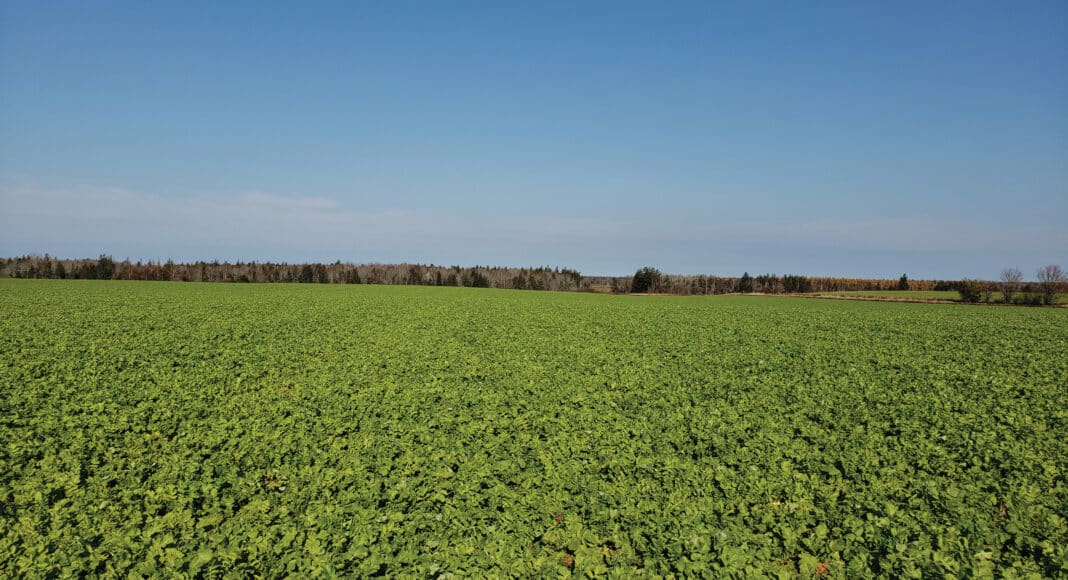Welcome to the inaugural edition of “Another Season’s Promise”, a regular column in Spud Smart on potato agronomy. The name comes a lyric from one of my favourite songs, “Field Behind The Plow” by Canadian folk singer-songwriter Stan Rogers.
For those that don’t know me, I’m fortunate to work for the Prince Edward Island Potato Board as a research and agronomy specialist. In this role, I get to work directly with potato producers conducting on-farm research trials, collaborating with researchers on local and national-level projects and doing agronomy extension projects throughout the year. I’ve been working in this role since 2016, and I love getting to know folks in the industry and discuss ways to keep improving yields and margins for producers while also improving the sustainability of growing potatoes.

Cover crops have definitely become a buzzword for many, with lots of attention on conference schedules and in research projects. Let’s dig into fall-seeded cover crops a little more… and explore how they may be a fit for your farm.
Firstly, there’s no “one size fits all” approach to cover crops. What works in Prince Edward Island may not suit in Alberta or Ontario. Like any production practice, we have to keep in mind that Canada is an enormous country with massive variation in climate, soil types, and crop rotations. All that being said, I still think that there is a case to be made for fall-seeded cover crops on many farm operations.
The number one reason without doubt for employing fall cover crops: keeping your soil in the field. No matter where you farm, soil erosion by wind or water is a significant threat to the long-term viability of fields and we should prioritize production practices that provide armour to our fields and keep topsoil from blowing away or being lost with runoff water. Not only does that keep your fields productive, but it often keeps the neighbours happy too.
At the same time, there are other reasons that often make fall-seeded cover crops a “win-win” for both the farmer and the environment. If you farm in Eastern Canada, where high precipitation and sandy soils make nitrate losses a frequent reality, quick-growing covers can help grab on to some of that nitrate and carry it over to the next growing season instead of losing it over winter.
Here in P.E.I., more than 20 site-years of on-farm trial data has shown that growing a fall-seeded cover crop in the year before potatoes resulted in an average yield bump of 30 cwt per acre. Many of these cover crops were established after forage crops (grass/legume mix usually), but some came after cereals or oilseeds as well. It didn’t seem to matter what you chose as a cover, be it oats, barley, rye, radish, mustard… anything was better than nothing. Species with low pounds per acre seeding rates can often be seeded at the same time as tillage with a seed box on your tillage implement, saving a trip over the field. If you’re new to fall cover crops, my first advice is keep it simple and cheap to start. Find out what works and what doesn’t on your farm and build from there.
Over the long-term, there are also indications that fall cover crops can help build soil organic carbon. Higher organic carbon improves the health and water holding capacity of soils and should soon carry a value in carbon credits for many farms in the not-too-distant future.
There are multiple reports and presentations on fall cover crops on our P.E.I. Potato Agronomy website if you’d like to explore this more. Until next time, I hope that everyone has a safe and productive “meeting season” as we gear up for “another season’s promise.”











